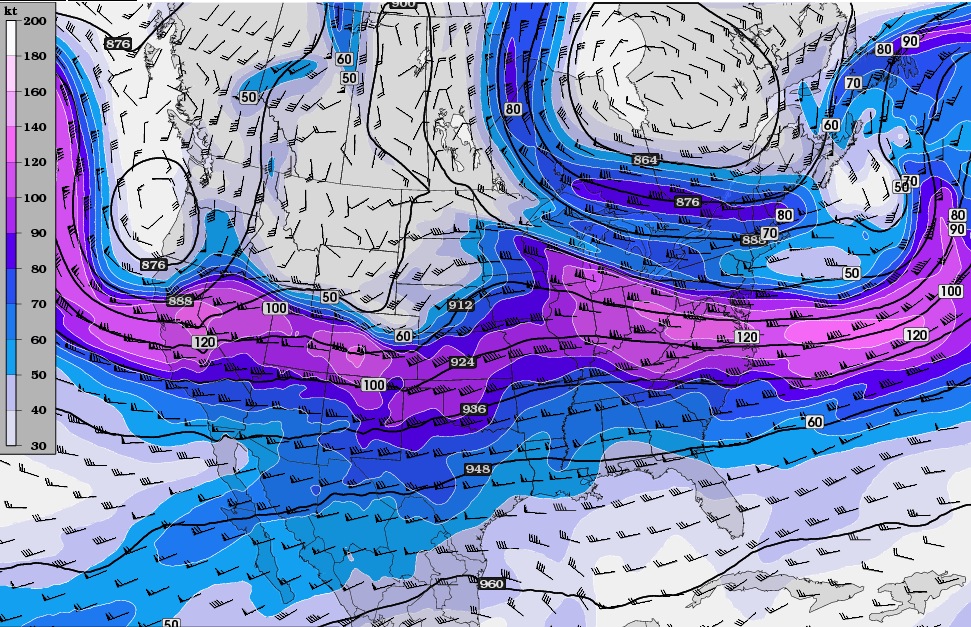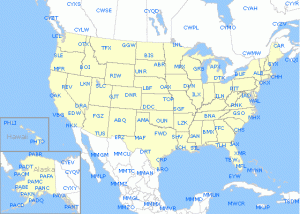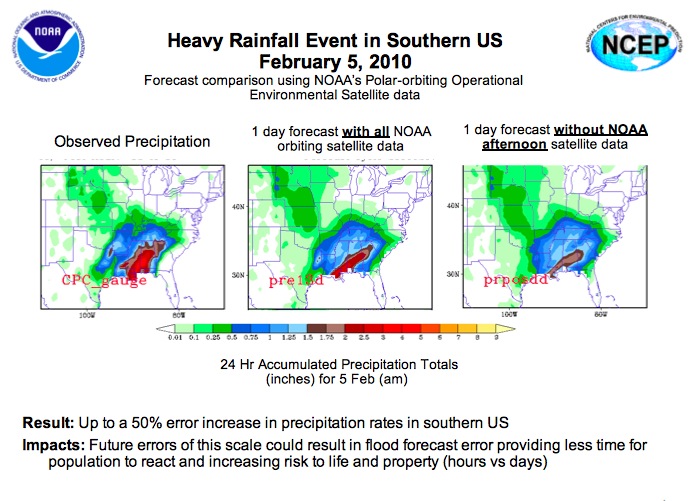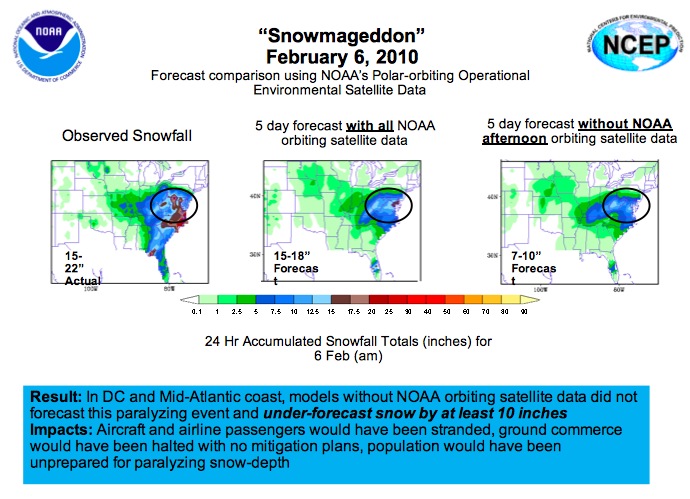25 March 2011
The Very Real Consequences of Defunding NOAA Satellites
Posted by Dan Satterfield
I rarely pay much attention to federal budget issues, but this issue is on my turf. Having worked around TV-news folks for 31 years, I am rarely surprised by politics or politicians! You tend to get rather jaded because you end up seeing a lot of crazy things, day in and day out!
That said, this is one I really could not believe. It seems the House of Representatives proposed budget includes no replacement for the NOAA polar orbiting weather satellites. The orbiters up there now are not likely to last much longer, and I suspect the average person has no idea of just how critical they are to the forecasts made each day by private meteorologists like me (and the folks at the National Weather Service and Environment Canada) etc.

The initial conditions at 300 mb (Around 30,000 feet) for 7 PM CDT Thursday 24 March. Image ctsy. Okla. U Meteorology
First of all, these satellites are not the images you see on most TV weathercasts, they are at a much lower (870 km) altitude and actually have a much better view of storm systems. Most importantly, they have instruments that allow the temperatures and winds in the atmosphere to be measured over wide areas, including the oceans, where very few weather observations exist. Modern forecasting relies very heavily on numerical weather prediciton models that simulate the atmopshere out to about 10 days and you must give these models as accurate an initial condition as possible.

Rawinsonde stations over North America. Balloons are launched twice daily from these sites. Models are run 4 times per day.
In other words, GIGO: garbage in=garbage out.
The number of weather balloon launches each day are nowhere near close enough to give an accurate initial state of the atmosphere, and satellite data is used to analyze the state of the atmosphere at many different levels. This data is automatically included in each model run, and many universities and atmospheric research centers run their own models using the initial conditions produced by NOAA’s National Center for Environmental Prediction (NCEP).
It’s actually pretty easy to show what the loss of these satellites will do to forecasts. Just go back and run the models without the satellite data and compare the difference between the model runs with the data AND with what actually happened!
NOAA has done just that.
If you are thinking that NOAA will just have to get by with those rawinsonde balloons, you should know that under the current proposed funding, they may have to cut the number of rawinsondes as well. You won’t need to worry about the weather for your trip to Paris though, the European Centre for Medium Range Forecasting (ECMWF) runs what is possibly the most accurate weather model in the world.




 Dan Satterfield has worked as an on air meteorologist for 32 years in Oklahoma, Florida and Alabama. Forecasting weather is Dan's job, but all of Earth Science is his passion. This journal is where Dan writes about things he has too little time for on air. Dan blogs about peer-reviewed Earth science for Junior High level audiences and up.
Dan Satterfield has worked as an on air meteorologist for 32 years in Oklahoma, Florida and Alabama. Forecasting weather is Dan's job, but all of Earth Science is his passion. This journal is where Dan writes about things he has too little time for on air. Dan blogs about peer-reviewed Earth science for Junior High level audiences and up.
[…] https://blogs.agu.org/wildwildscience/201… […]
[…] science news journalism in the UK national media". Science, politics: The AGU blog talks about the silly USA Republican drive to stop funding certain weather satellites, and the bad consequences. Science, humour: The blog Dangerous Experiments has, fittingly, a blog post up about the dangers […]
[…] Dan Satterfield at The AGU Blog has an excellent article highlighting exactly what the loss of the new satellite programs will […]
I have been reading your blog with interest, since I am a weather junkie. This post made my hackles rise. And I have to ask the question (like I always do when the topic of budget cuts come up): why is it that we always hear about what they are going to cut, rather than all the things they paln to leave alone? I think that list is the one I’d rather see. But of course they won’t–they want our eyes off it, just like they want our eyes off the weather at the poles. They want to defuse the global warming folks. Can you think of a better way to do that than to shut off the camras so the proof is gone?
[…] from meteorologist Dan Satterfield writing on the blog of the American Geophysical Union I rarely pay much attention to federal budget issues, but this issue is on my turf. Having worked […]